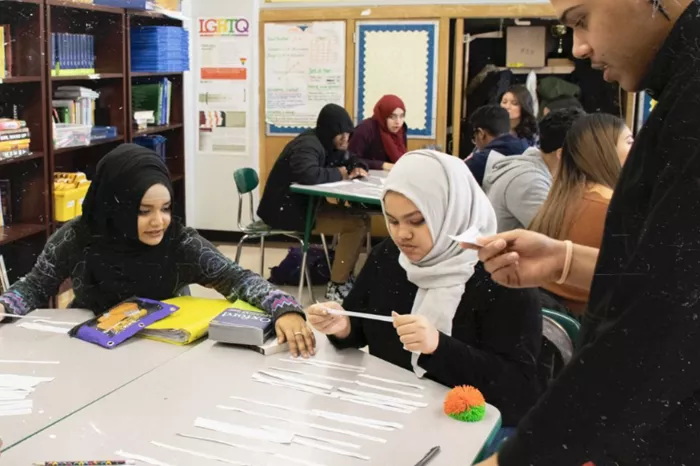A young man recently arrived from Senegal visited the Center for New York City Affairs (CNYCA) seeking assistance with school enrollment. He is among over 200,000 migrants who have come to the U.S. since spring 2022, often fleeing difficult conditions such as economic hardship and armed conflict.
After arriving in New York City earlier this year, he lived in a temporary shelter where he expressed his desire to enroll in school using his native language, Pulaar. He received an email from CNYCA’s InsideSchools project, which helps newcomers navigate the city’s educational system. Although he struggled with the email’s instructions, he managed to find the CNYCA office, where staff quickly assisted him in enrolling in school.
Unfortunately, many young migrants face significant challenges similar to his. Among the more than 42,000 new students in New York City schools since 2022, many are aged 18 to 21 and often arrive unaccompanied. Eager to continue their education, they frequently encounter bureaucratic obstacles.
Many of these young people struggle to enroll at Family Welcome Centers, where help is supposed to be available. Language barriers complicate communication for those who speak Pulaar, Wolof, or Arabic. They are often told there is no available space in suitable schools, such as transfer schools or international schools designed for older students.
Instead, they are labeled as too old or lacking sufficient academic credits—many do not have transcripts from their home countries. Consequently, they are directed toward adult education programs that do not align with their educational goals. One young man expressed his frustration to an InsideSchools staff member, saying, “I want to learn, but the schools don’t want me.”
To address these issues, InsideSchools staff have accompanied over 65 young people to Family Welcome Centers and other educational institutions to help them find suitable placements. They have also partnered with organizations like the Internationals Network for Public Schools and community groups such as Afrikana.
Since 2023, the Internationals Network has enrolled over 1,000 older newcomer students across its 15 high schools in New York City. The organization has created free resources and a professional development program for school leaders based on years of experience.
For schools to effectively serve older newcomer youth, they must adapt their structures and processes from registration to classroom practices. A successful approach includes comprehensive support services and advocacy for these students. Importantly, these changes will benefit all students in the community.
However, the “Every Student Succeeds Act” (ESSA), which governs federal funding for local schools, complicates these efforts. Current provisions penalize schools that serve older students who may not graduate before turning 21 or who require more than four years to complete their education due to disruptions in their home countries. Schools should be encouraged to educate these motivated learners; thus, reauthorization of ESSA next year must include incentives for doing so.
On October 17th, CNYCA will co-host an online policy forum featuring experts discussing challenges and solutions for ensuring that older newcomer youth can access education. Recognizing these students as vital contributors to the educational landscape is essential; they deserve robust support and understanding. Their determination should be nurtured rather than hindered.
Related topics:
- UK Government Rules Out Scottish Visa Scheme to Attract Migrants
- Singapore Permanent Residents Can Now Travel to Riau Islands Without a Visa
- Immigrants Will Be the Sole Source of Growth in America’s Labor Force


